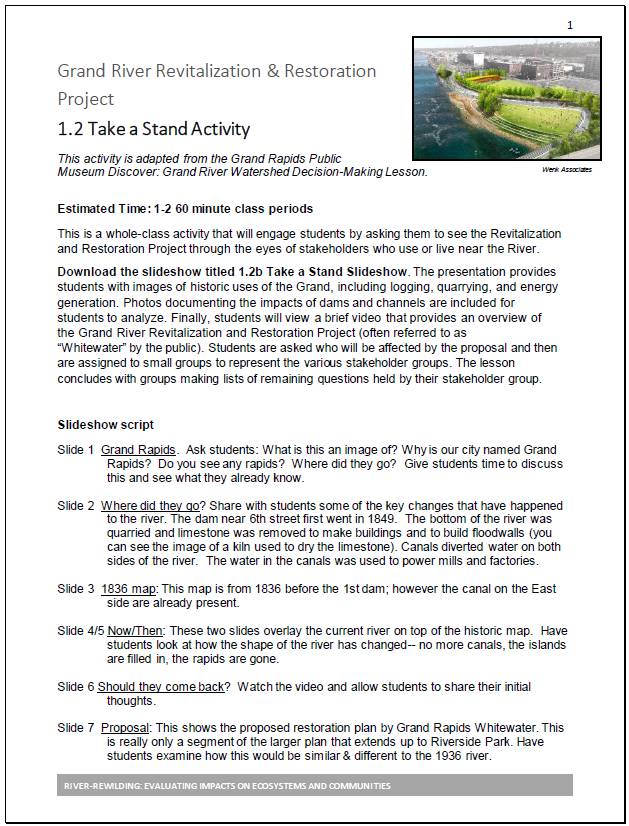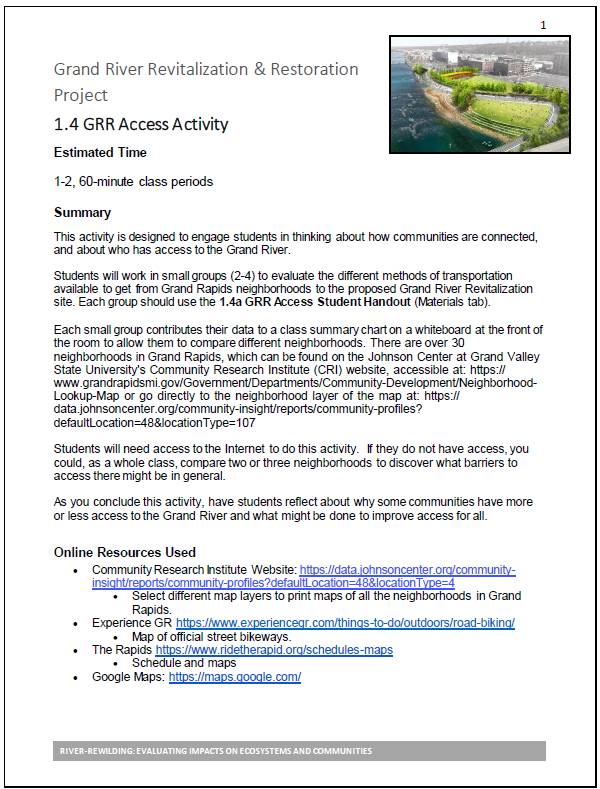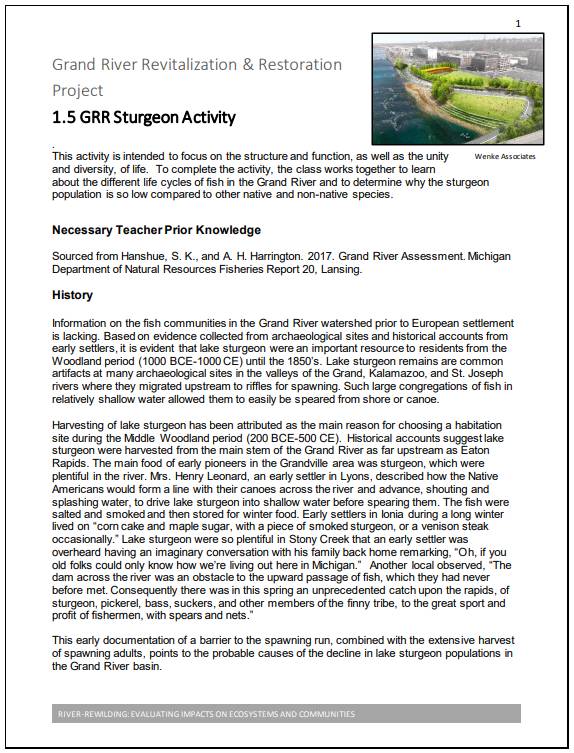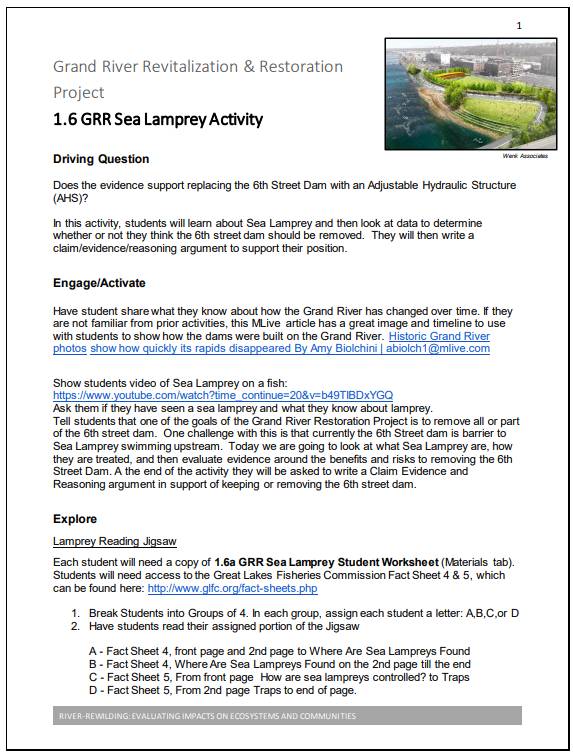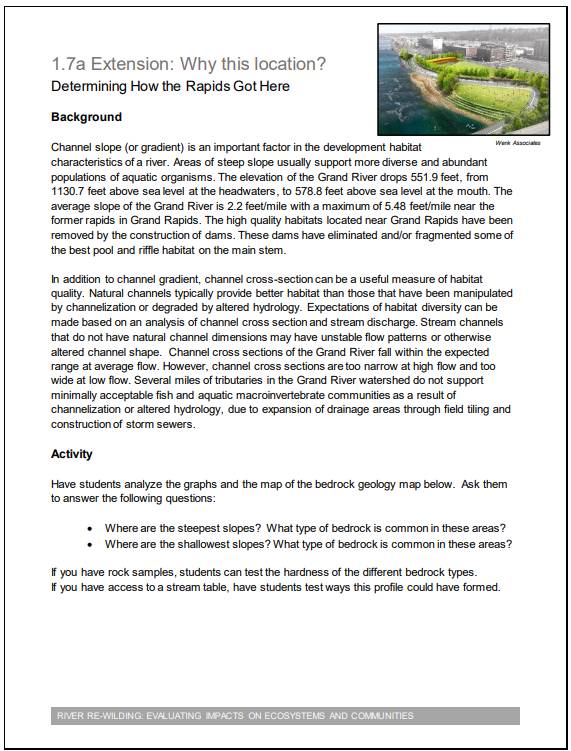River Rewilding: Grand River Restoration and Revitalization Project
About
Students will explore the Grand River Revitalization & Restoration Project in this unit. They will look at the economic opportunities associated with the Grand River and community access to it. They will then learn about two species impacted by the restoration: the Lake Sturgeon (a desired species) and the Sea Lamprey (an invasive species). Learn more about the Unit Sequence.
More About This Resource
Grade Level
- Middle School
- High School
Estimated Time
- 1-2 class periods per activity
- 1-2 weeks for the full unit
Essential Questions
- How can the proposed Grand River Revitalization reduce the impacts of human actions on the Grand River?
- Whose voices should be a part of implementing the Grand River Revitalization?
- What economic benefits will the Grand River Revitalization bring to our community?
- How does the lifecycle of the sturgeon affect its ability to survive in the Grand River?
- What are the potential costs and benefits to Sea Lamprey management with the Grand River Restoration?
Take a Stand on the Issue
Investigate the Issue
Guide students as they see the Grand River Restoration and Revitalization project through the eyes of stakeholders as they learn about the issue through research and group work, culminating with students developing investigation questions.
Documents you will need for this activity include:
Investigate the Economics
Understanding How Policies and Practices Impact the Issue
Students engage in identifying the potential users of the restored rapids and the project’s contribution to the economics of Grand Rapids.
Documents you will need for this activity include:
Identifying Relevant Issues
Considering Community Needs
Students will think about how communities are connected and who has access to the Grand River. In small groups, have students work to evaluate the different methods of transportation available to get from Grand Rapids neighborhoods to the proposed Grand River Revitalization site.
Documents you will need for this activity include:
Learn the Issue: Sturgeon
Sturgeon
Encourage students to investigate why sturgeon are important and how sturgeon populations could be increased through restoration efforts in the Grand River. This activity focuses on structure and function, as well as the unity and diversity of life itself. In this activity, the class works together to learn about the different life cycles of fish in the Grand River and to determine why sturgeon populations are low compared with other species.
Documents you will need for this activity include:
Learn the Issue: Sea Lamprey
Sea Lamprey
Students consider the benefits and risks of dam removal as a part of the restoration efforts in the Grand River. In this activity, students investigate the sea lamprey and then analyze data to determine whether or not they think the 6th Street dam should be removed. They then write a claim/evidence/reasoning argument to support their position.
Documents you will need for this activity include:
Investigate the Location and Human Impact on the Natural Ecosystem
Considering Location
In the extension activity, 1.7a: Why this Location, students analyze river gradient graphs and a map of the bedrock geology map of the Grand River to investigate how channel slope (or gradient) is an important factor in the habitat characteristics of a river.
Freshwater Mussels
In lesson 1.8a: Mussel Extension, students dive deeper into freshwater mussels as they investigate these special creatures that call the Grand River home.

